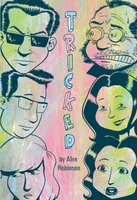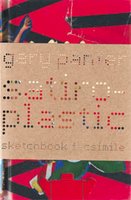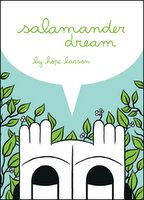Graphic Lit -- 3/19
"Tricked"
by Alex Robinson
Top Shelf Productions, 352 pages, $19.95.

A reclusive rock star, an unlucky-in-love waitress, a young teen looking for her father, a deceitful young man and a fan on the verge of madness all converge with violent consequences in this follow-up to Robinson’s popular first graphic novel, "Box Office Poison."
Robinson plays to his strengths here, with characters and dialogue that seems sharply drawn from real life. Not everything works — the romance between the rock star and a young temp seems contrived, and the ending is a bit too pat. Yet despite some significant missteps, the book is well worth your time if for no other reason than to appreciate the number of subtle storytelling tricks and other devices that let us probe the character’s inner lives and heighten the story’s tension.
"Satiroplastic"

by Gary Panter
Drawn and Quarterly, 104 pages, $19.95.
This is a handsome, pocket-sized collection of Panter’s sketches and drawings completed from 1999 to 2001. While it boasts an impressive design, the book will most likely be enjoyed by serious Panter ("Jimbo in Purgatory") fans, who can then wave the book under the nose of naysayers as proof that yes, the man can draw.
"Salamander Dream"
by Hope Larson
adHouse Books, 98 pages, $15.

Larson explores the bittersweet relationship between young girl and a magical forest creature, and chronicles in a few pages how time and adolescence slowly erode their friendship. Deceptively simple, fanciful images hint at the emotional ties that bind us to our childhood friends, as well as show how nature can seem mysterious and thrilling when you haven’t cracked open a science textbook yet. Although it’s her first book, "Salamander Dream" doesn’t feel like a debut, but like a significant work from an already established talent. I can’t wait to see what Larson does next.
"Full Moon Vol. 1"

by Arina Tanemura
Viz, 208 pages, $8.99.
A sickly 12-year-old girl realizes her dream of becoming a pop singer with the help of a pair of comical harbingers of death who magically age her to 16. The story, as you might have guessed, doesn’t really make much sense; Tanemura plays fast and loose with the rules regarding the main character’s illness, and I had trouble keeping track of what age she was supposed to be at various points. But it’s a relatively breezy and pleasant enough read for hard-core manga fans to enjoy, so long as they don’t spend too much time thinking about it.
Copyright The Patriot-News, 2006

0 Comments:
Post a Comment
<< Home